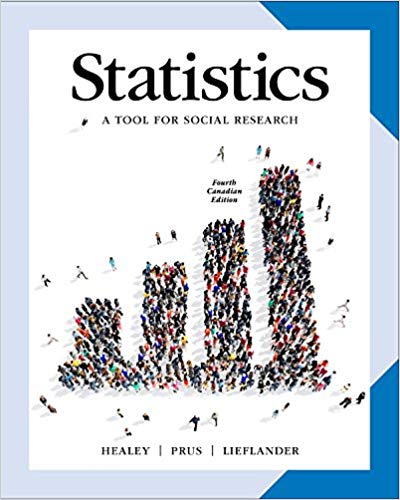Description
Statistics A Tool For Social Researchers in Canada 4Th Edition – Test Bank
CHAPTER 5 – Introduction to Inferential Statistics: Sampling and the Sampling Distribution
|
1. Social scientists study many different populations, but what is a major complication they often face? a. Populations are often too large to study. b. Populations are often not representative. c. Samples are often too large to study. d. Sampling distributions are often not random. ANSWER: a |
|
2. Which of the following is a common reason that researchers often use samples to test a theory? a. Populations are often not representative of all the relevant cases needed to test a theory. b. Actual data can be gathered only from samples; populations are merely theoretical. c. It is often not feasible to collect data from every case in the population. d. Populations are often too small to accurately test a theory. ANSWER: c |
|
3. The average age for a population of doctors in a hospital is 51.6 years. What does this mean value represent? a. a statistic b. a parameter c. a sample d. a standard error ANSWER: b |
|
4. A researcher finds that 4% of people in a convenience sample of university students are smokers. What can she conclude about other young people who attend other universities in the same city? a. They are unlikely to smoke. b. Between 2% and 10% of them are likely to smoke. c. They are very likely to smoke. d. She can conclude nothing. ANSWER: d |
|
5. Which of these research scenarios would be appropriate for using a nonprobability sample? a. to determine whether Canadian prisoners are less healthy than the rest of the population b. to explore whether research subjects understood the wording for a newly developed survey question before it was included on a nationwide survey c. to compare the prevalence of asthma in Canada with the prevalence in India d. There is never an appropriate situation for using nonprobability samples. ANSWER: b |
|
6. What does it mean for a sample to be representative? a. The sample is very large. b. The sample has a low probability of being random. c. The sample reproduces the important characteristics of the population. d. The sample has no standard error. ANSWER: c |
|
7. When do social scientists use inferential statistics to generalize to populations? a. after collecting a representative sample b. after collecting at least 100 cases from all possible populations c. after collecting an EPSEM sample from the population of interest d. after collecting all the information possible from the entire population ANSWER: c |
|
8. Which of the following is a required characteristic of a sample if it is to be used to make accurate generalizations to a population? a. The sample must be very large. b. The sample must be representative. c. The sample must be nonprobability. d. The sample must be stratified. ANSWER: b |
|
9. Which of the following is a limitation of simple random sampling? a. It uses non-random samples. b. It violates the rule of EPSEM. c. It does not guarantee representativeness. d. It does not use representative samples. ANSWER: c |

Reviews
There are no reviews yet.